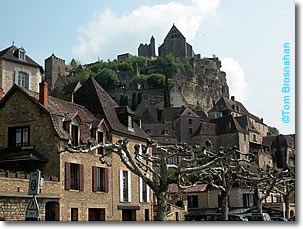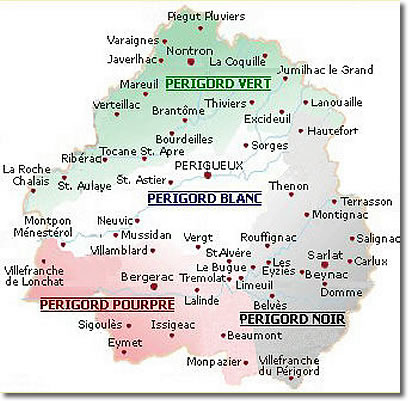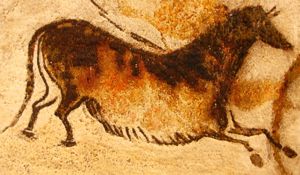 |
Périgord (Dordogne), France | |
| The historic name of Périgord, land of castles, rivers, verdant countryside, and delicious high-calorie cuisine, is still commonly used to describe the region of the Dordogne river valley. | ||
|
|
|
Dordogne = Périgord?It can get confusing trying to keep the various régions of France straight, especially when some are known by more than one name. What we commonly refer to as the Dordogne region is also referred to as Périgord, the historic name of the area—dating back centuries. Although the département has been known as the Dordogne for years, many people still use the term Périgord. So be aware that you might hear both. Périgord/the Dordogne is/are also part of the région of France known as Nouvelle-Aquitaine, which also includes Bordeaux. And to make things more complicated, the Périgord has been further divided into four "colorful" regions:
Périgord NoirThe Périgord Noir (Black Périgord) is where most places of touristic interest are, including Sarlat-la-Canéda, the prehistoric caves of Lascaux, the medieval town of Domme, and other towns on the Dordogne and Vézère Rivers. More... Périgord PourpreThe Périgord Pourpre (Purple Périgord), so named because of the abundant wine from the area, is centered on Bergerac-et-Cazenac. More... Périgord VertThe Périgord Vert, or Green Périgord, is the northwestern part of Périgord, known for its lush green fields and valleys and beautiful gardens. Périgord BlancAnd the central Périgord Blanc, or White Périgord, is named for the abundance of white limestone in the area. Périgueux, the administrative center of the Dordogne département, is in the Périgord Blanc. You'll also hear the term referred to in reference to food, and the cuisine of Périgord, characterized by truffles, foie gras, and other goose and duck products, is world renowned.
|
|

Above, Château de Beynac, in the
Prehistoric cave painting, Lascaux IV, in the Périgord Noir, Dordogne, France |


